
Starting basic experimentation.
Okay, so here’s where we’re at: I need to spend some time finding more projects that exist within the intersection of nature, technology and design and also, as part of the dissertation module, read and understand the scope of said ‘nature’ that I am defining.
I went hunting for projects and references first. I began with case studies I already visited during my compendium days, which all deal with cybernatures and artificial life and our interactions with these virtual ecosystems.
Example 1: Interactive Plant Growing
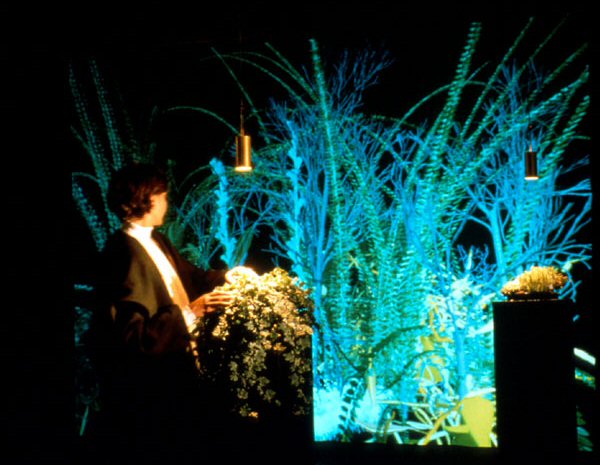
Interactive Plant Growing (1993), by Christa Sommerer and Laurent Mignonneau, is a human plant interactive installation that combines real, tactile and tangible plants with virtually three dimensional plants generated on a digital screen. The tangible plants act as an interface between the participant and the virtual generated plants.
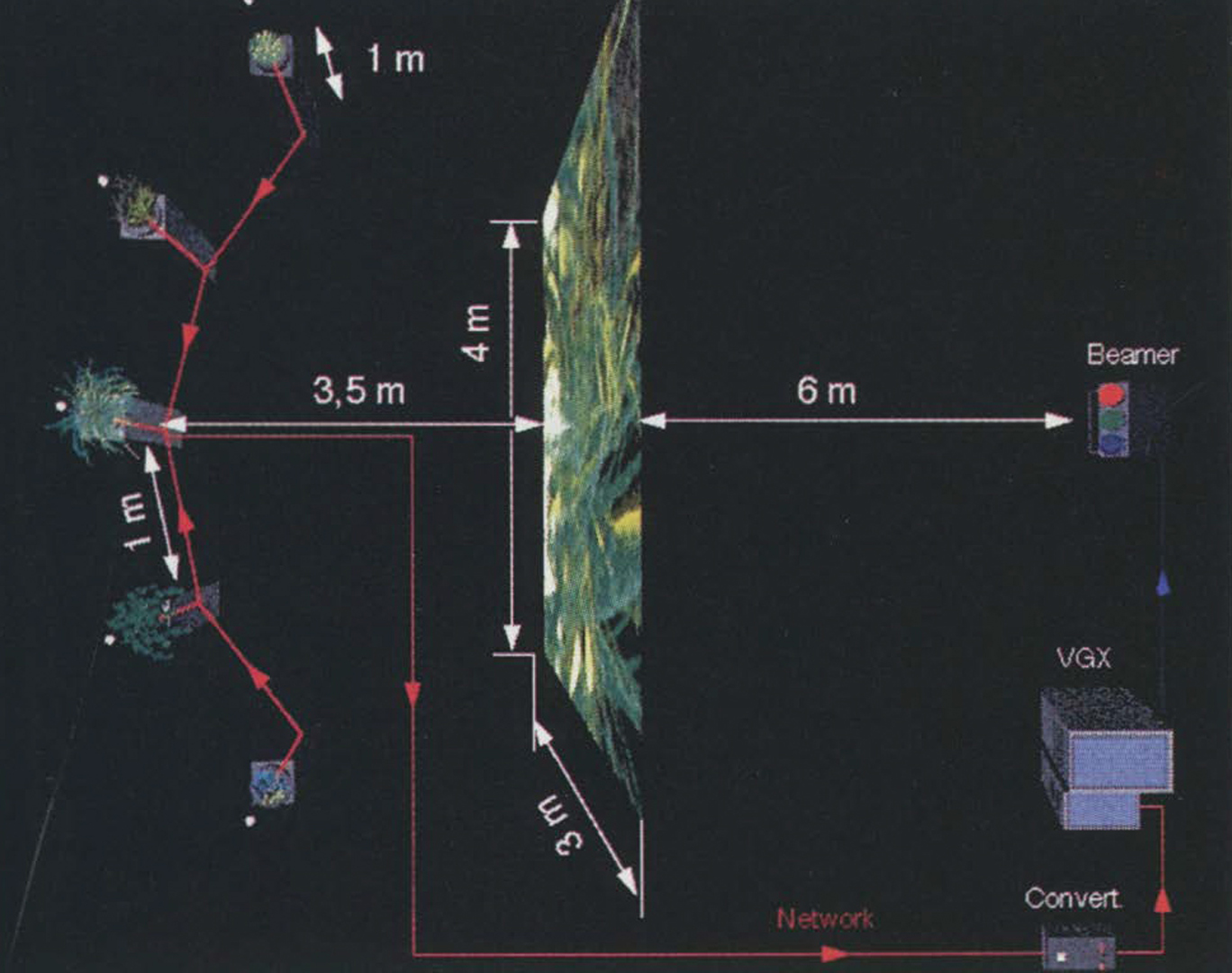
The computational values of the nuances of how the participant interacts with the plant is stored by regulating the pressure and direction of touch, and the participant can direct plant growth in terms of size, colour, shape and rotation, all reflected instantaneously on the screen. Furthermore, the participant acts as an unpredictable, randomising function that therefore produces unique outcomes every period of time.
What I personally find most interesting about this project is the use of a plant as an interface. With Interactive Plant Growing, their intent was to inculcate a sense of appreciation, higher sensitivity and awareness for real plants, by creating a system where participants would take a certain amount of time to understand the detailed nuances of how to direct growth of virtual plants on the screen.
Could someone brutally tear the leaves of the plant for instance? Or could the reframed nature of the plant as a ‘tool’ inculcate some sense of tenderness within the participant?
Example 2: Daniel Rozin

Interactive Plant Growing is not the only project that uses the plant as an opportunity to communicate/for communication. When I was in New York, I visited the Bitform gallery and saw Daniel Rozin's work. At the very entrance was a plant fitted with sensors (I couldn’t tell which, but I did spot an Arduino hidden behind some leaves) that would move the plant stems in greeting. It wasn’t the most impressive to me (it wasn't very responsive and the set up was a bit messy in person) but it was a way of giving a plant some sense of consciousness, I guess.
Example 3: MIT Media Lab's Elowan
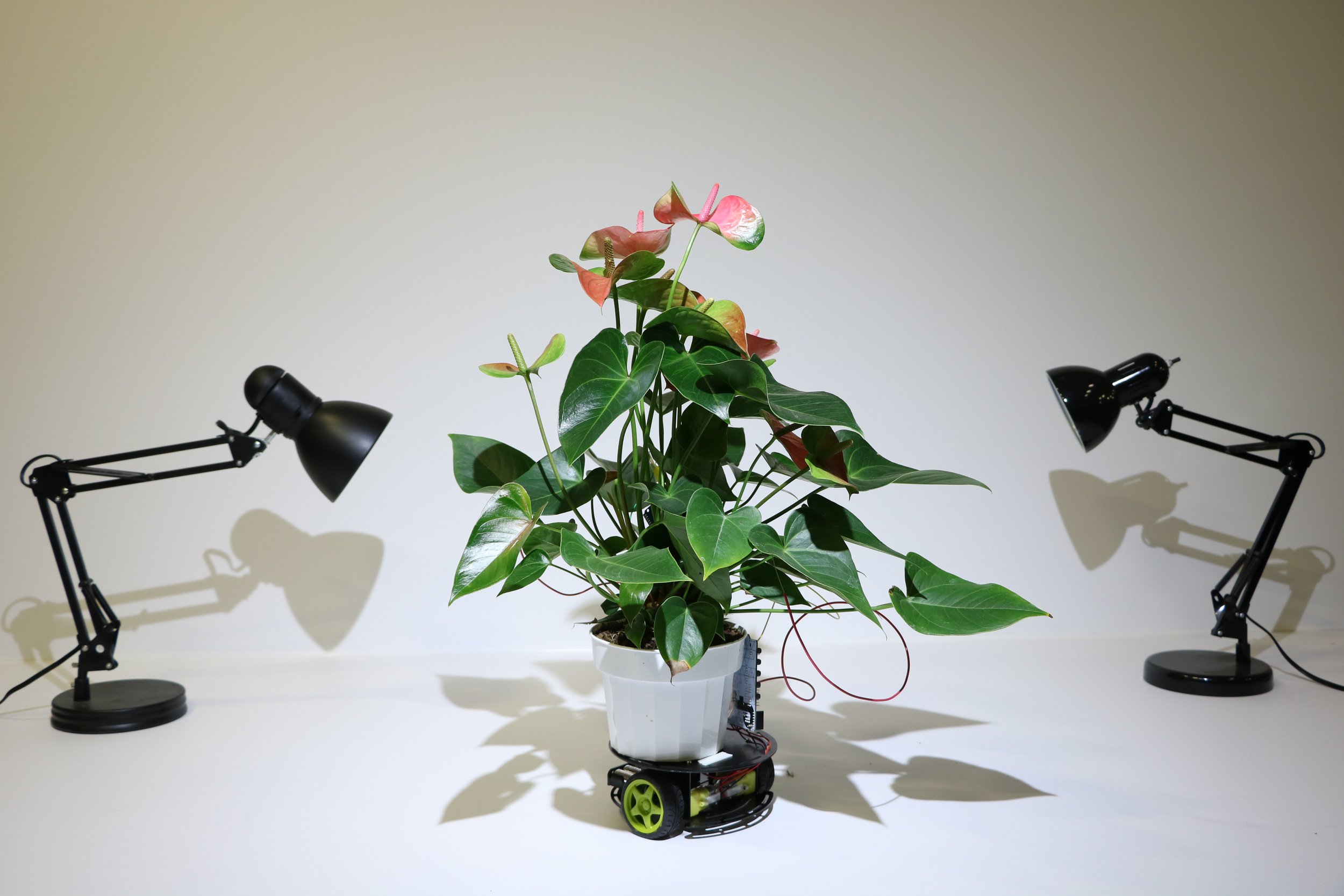
Another, super advanced instance of interactive plants is MIT Media Lab’s cyborg plants! Harpreet Sareen used sensors and actuators to turn the plants into alternate interfaces. There is also a version called ‘Elowan’ that enables locomotion, by fitting wheels on the bottom of plant pots.
I think this arrangement equips the plants with their own sense of agency: thanks to their newfound locomotion, they can move towards light sources by themselves.
A future where plants are conscious, sentient beings?
Example 4: Botanicus Interacticus

To round up the category of ‘Plant as Interface’ we also have Botanicus Interacticus (love the name) that also envisions the plant as an interface. The artist, Ivan Poupyrev, imagines that ‘Interactivity and responsiveness can be added to homes, streets, and even entire cities, unobtrusively and sustainably simply by growing plants’.
Botanicus Interacticus is based on Touché sensing technology invented earlier at Disney Research, Pittsburgh. So, it’s not a slew of many wires and sensors attached to the plant like I imagined, but just a single wire that is placed in the soil of the plant. There is a page in Pouryrev’s page that explains said Touché Technology, which I will study later. Resource
The Reoccurence of the Plant as Interface
So far, the projects I’ve found use the potted plant as an interface, which is quite a common recurrence! I wonder why: is it the notion of its domesticity and how familiar they are to us? How we bring a little bit of the outside inside to keep us company and allow us to have a small, perhaps even personified connection with nature?
I think back to the houses I’ve grown up in and how my mother always made sure to include greenery in whatever balcony spaces or terraces we had. Perhaps it stems from that! She grew up in a less urban space, where greenery was more familiar to her, and I admire her for trying to inculcate the love within her children, as well.
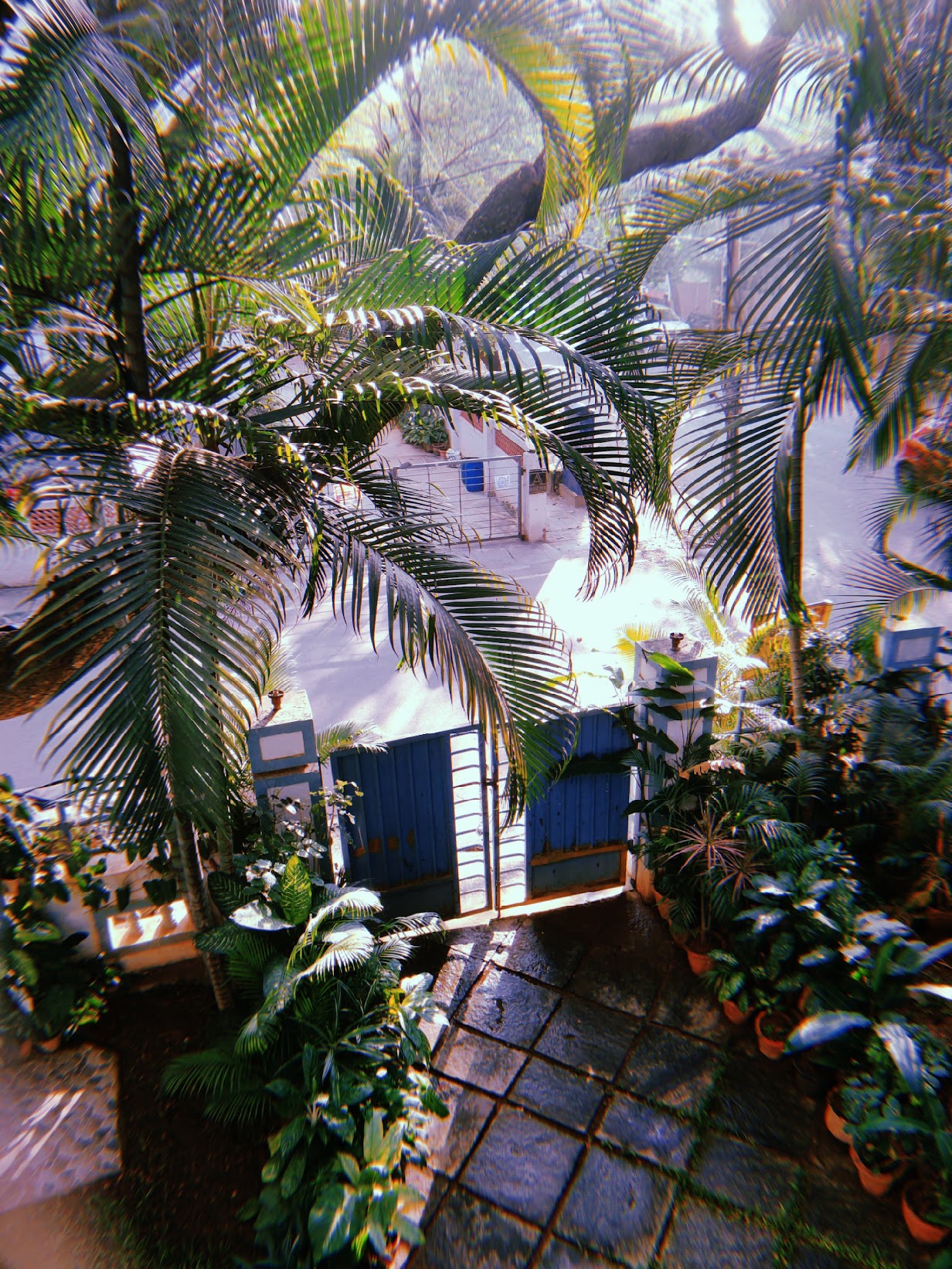
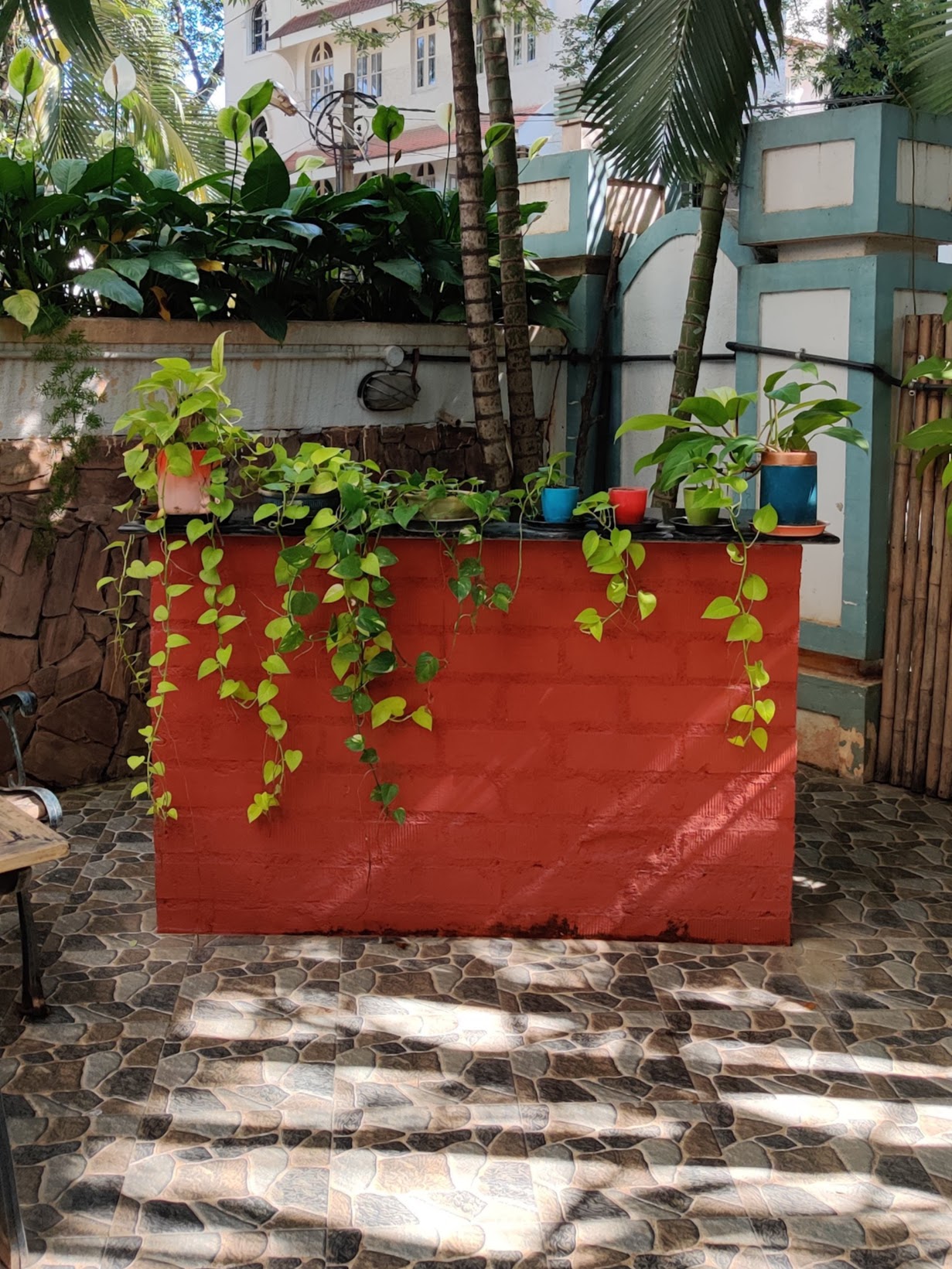
This got me wondering about nature and the cultural perspectives through which we view it. All of the projects I have perused through so far are based on more ambiguous, general definition of nature, with the notable exception of teamLab’s cybernatures that are heavily influenced by the more non-anthropocentric Japanese nature. Much of the media I am also currently consuming has been written in Western countries, which irked me! I wouldn’t consider myself very culturally rooted, but I would like to hear more about what Indians, for example, have to say, especially in a global amplitude.
Mind Mapping and Establishing Keywords
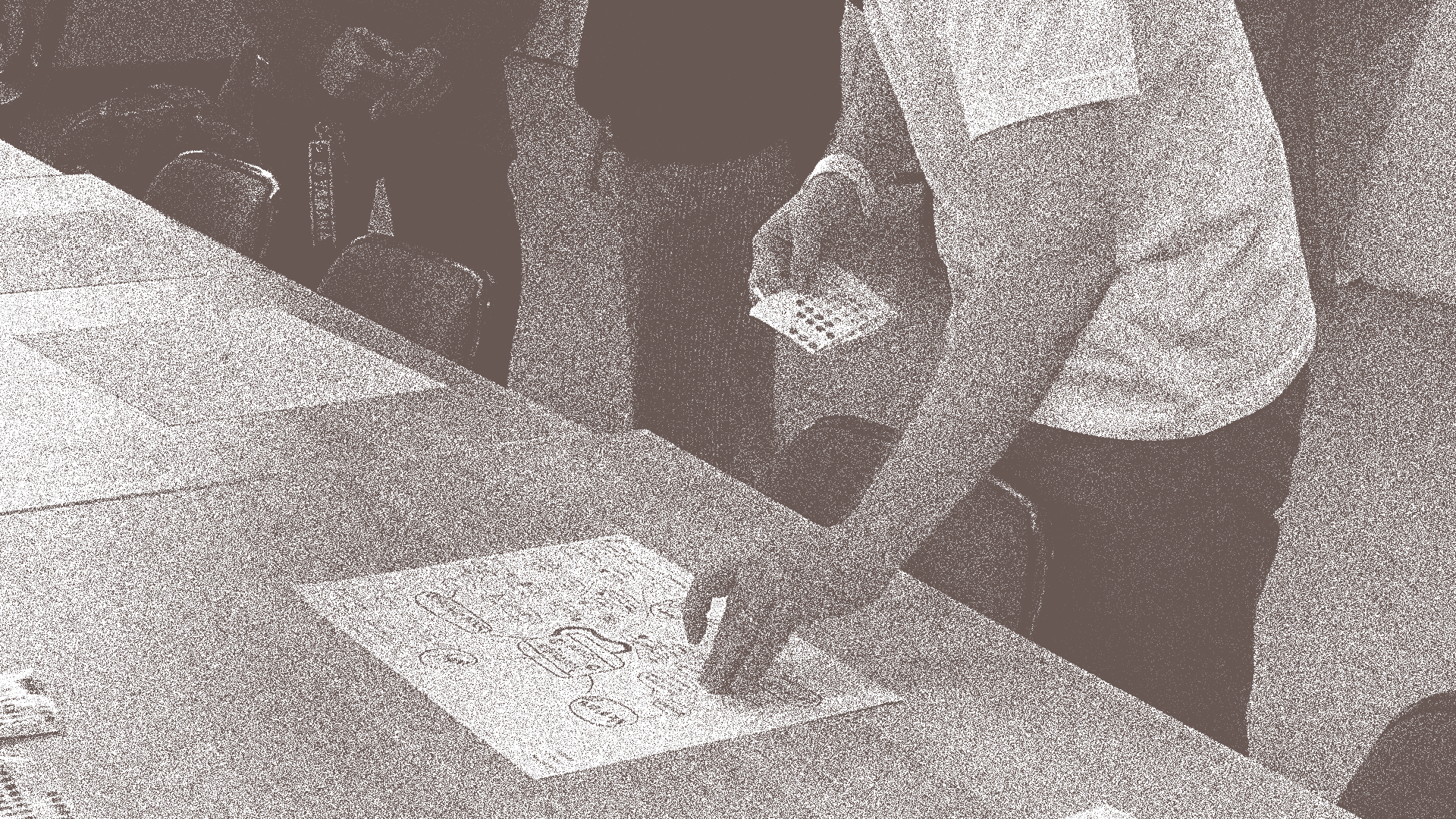
We had a mind-mapping activity in Tuesday’s dissertation class where, after a talk by Matthew, a senior, we listed out keywords and possible ways to approach/tackle them. After drawing the maps, we held a group session where Andreas handed us stickers and we placed them on everyone’s mind map on a branch that seemed particularly interesting or unique. Here’s mine.
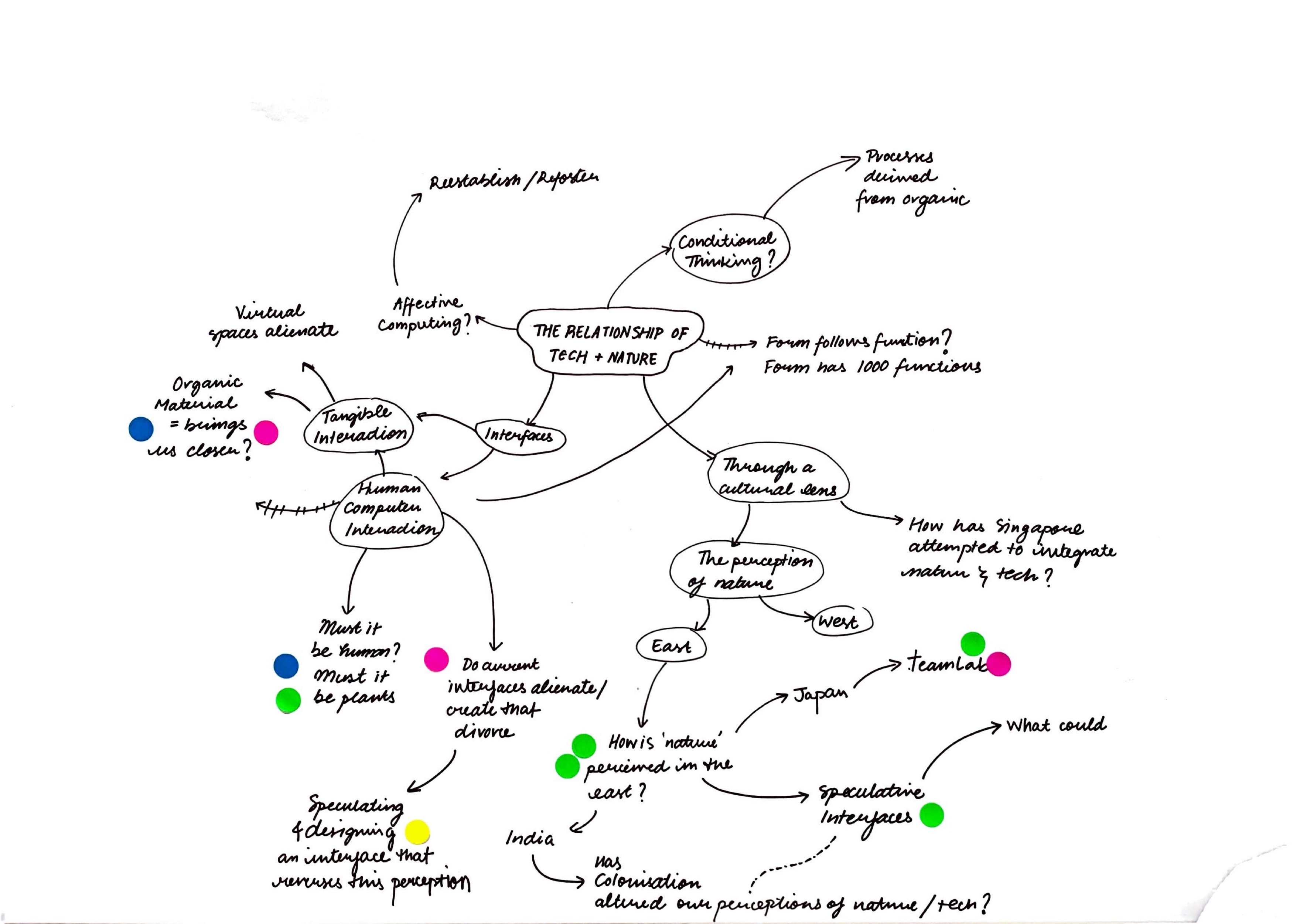
I got quite a few stickers in the branch that considers eastern perspectives of nature as well as speculative design, which fascinated me. I guess I had been looking for a successful entry point into this huge venn diagram of nature, technology and design and maybe this is it.
Maybe my next steps in research can be finding readings that support this question!
Getting In The Making Groove
My mind was still on the set of human-plant interaction projects that I discussed earlier so I decided to just jump straight into prototyping to see what tangible interactions with a potted plant could actually feel like. It’s as well and good when I’m reading about these projects, but of course there will be some gestural and interaction-based nuances that I can only observe in person.
First, I attempted to make a touch sensor using just plain buttons and post it notes to complete the circuit. Maybe touch sensor isn't the best way to phrase it, since these worked only when applying a certain amount of pressure.
Furthermore, I found an ultrasonic sensor and thought about proximity! Could my hands near the plant facilitate a reaction?
Well, it could, but since I also just placed the sensor on the rim of the pot facing upwards, it
→ Easily detected the leaves unless it was positioned just right
→ It was able to detect my hand, but not whether it was touching the leaves or not, just based on proximity
→ It could not sense if my hands were touching the leaves behind it.
Not a very successful experiment, but an experiment nonetheless. What can I do next? Maybe focus more on the touch-based interactions by using copper tape (maybe attached to the plant?)
I wondered how I could build a basic touch sensor and found this resource that built one using a pnp transistor. Essentially, what would happen is that my hand, connected to my body which has resistance, would close this circuit and the LED would light up. Here’s a circuit diagram for the same:
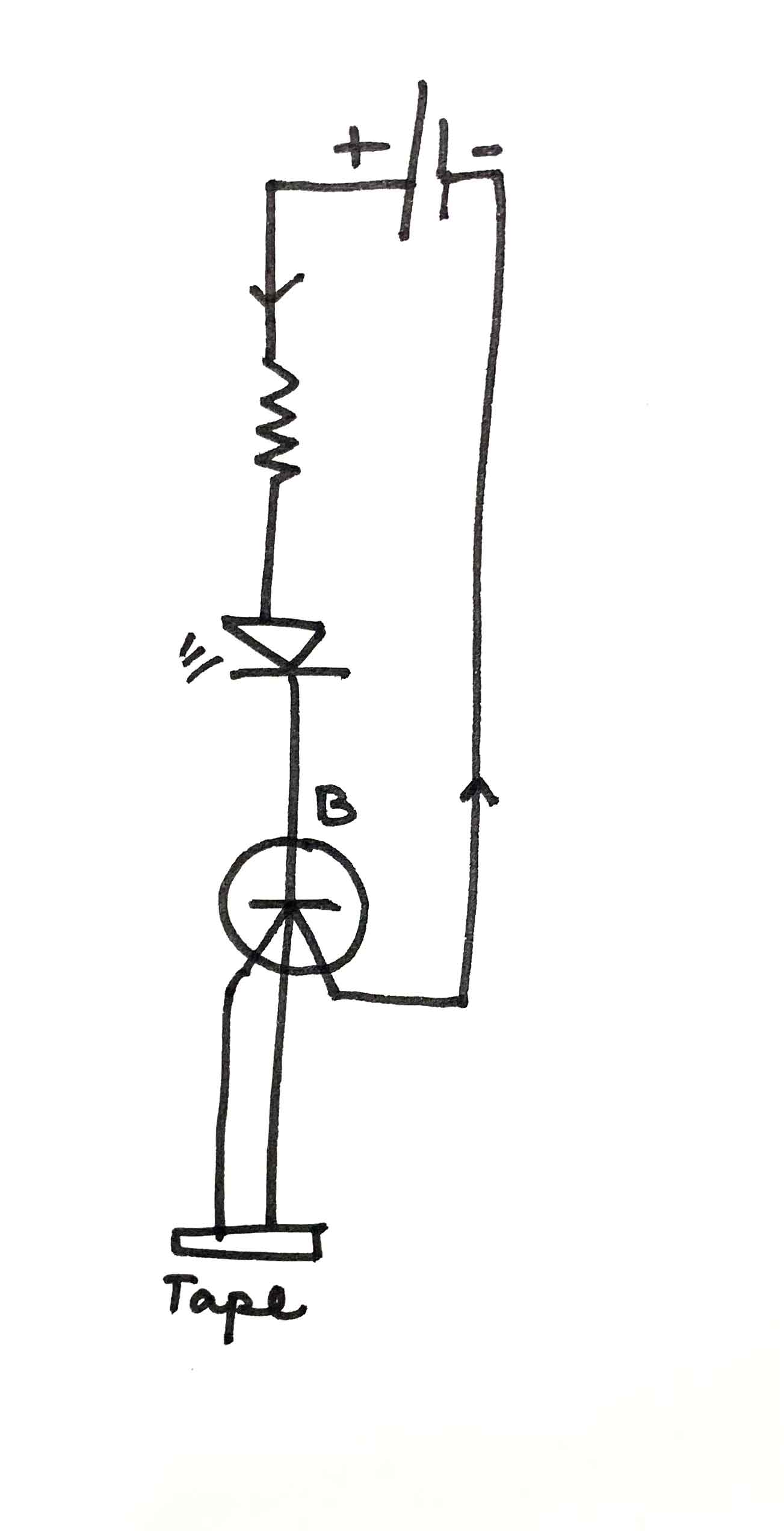
Something funny happened: the circuit would simply not work unless I wet my finger (Water is conductive so it’s more effective at facilitating the completion of the circuit). But this was not really practical for me because unless someone is nervous or super sweaty, I would have to ask any participants to actively wet their fingers. Even then, the current produced was extremely weak and only faintly lit up the LED.
Time to work on another solution, then!